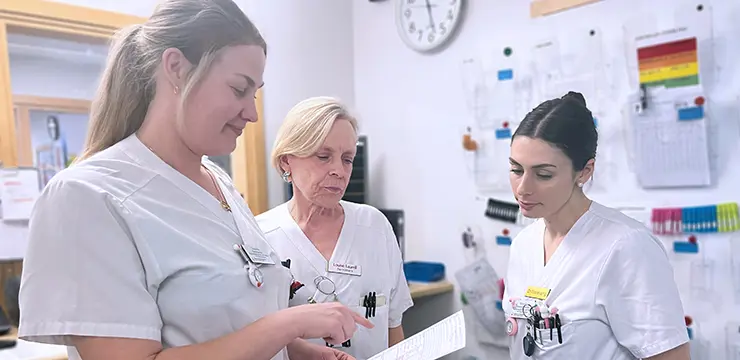Novel tool in healthcare aims to Identify more children and young people at risk

On 1 April, the paediatric emergency departments at Skåne University Hospital began using the new tool as part of efforts to strengthen child protection measures.
“We will systematically screen all children seeking care at the paediatric emergency departments in Lund and Malmö to determine if they are at risk,” says Josefine Cattell, specialist in paediatrics at Skåne University Hospital.
Experiences of Child-check
International and national research has shown that healthcare services often fail to identify and report concerns when there are suspicions that a child is at risk.
“This is particularly true in emergency care, where the focus is on somatic problems, patient encounters are brief, and workload is often high,” says Louise Laurell, consultant in paediatrics and lead researcher for the study at Skåne University Hospital.
In 2020, the Child-check tool was tested in the adult emergency department at Skåne University Hospital in Lund. Child-check involves asking all adult patients attending the emergency department whether there are children in their household. If the answer is yes and the adult is assessed to have one of three risk factors, social services are routinely informed.
The goal was to help healthcare professionals identify more children at risk and increase the number of safeguarding referrals.
“When Child-check was tested as a pilot project, it led to a significant increase in the number of safeguarding referrals. Over a two-year period, social services in Lund received 131 reports via Child-check, with 47 per cent of the children previously unknown to social services. The results led to the method being implemented across all emergency departments in Region Skåne,” says Louise Laurell.
Screening tool for paediatric emergency departments
Skåne University Hospital is now taking the next step by introducing a similar tool in its paediatric emergency departments. Like the tool used in adult emergency care, this new tool originates from the Netherlands but has been adapted to Swedish legislation and the conditions of Swedish healthcare.
In essence, the nurse who first assesses the child will use a decision-support tool to determine whether risk criteria indicate that the child is at risk. If so, the responsible physician is contacted, and existing procedures and guidelines for handling suspected child abuse are followed. This may ultimately result in a safeguarding referral.
“We – assistant nurses, paediatric nurses, registered nurses, and doctors – need to improve our ability to make these assessments together,” says Josefine Cattell.
A systematic approach
Child protection has long been a priority in the work of the paediatric emergency departments at Skåne University Hospital.
“But we have not previously worked with safeguarding referrals in such a structured and systematic way,” says Katinka Holgersson, unit manager at the paediatric emergency department in Malmö.
Ahead of the implementation, all staff in Lund and Malmö have been informed about the new tool, and administrative procedures have been adjusted accordingly.
“The tool needs to be easy to use for it to function in an emergency department,” says Katinka Holgersson.
Part of an international study
The implementation is being carried out as part of an international study. Skåne University Hospital is one of three hospitals in Europe participating in the CAN-Ready study, which will examine the implementation of the tool. As part of the study, a digital, interactive training programme will be introduced for all staff, and their feedback will be evaluated through surveys before and after implementation.
“My hope is that we can create a finer safety net and ensure that no children at risk are missed,” says Katinka Holgersson.
“I also hope that this approach will work well within the organisation, both for the children and for staff. In healthcare, there is a stigma around making safeguarding referrals – it is often perceived as uncomfortable and a drastic measure. But if we have a standardised approach where we work together and apply the same process to all patients, I believe this will create a sense of security among healthcare staff,” says Josefine Cattell.
Facts: The CAN-Ready study
- CAN-Ready stands for Child Abuse and Neglect Readiness Package.
- The study is being conducted in paediatric emergency departments at Hospital Sant Joan de Déu in Barcelona, Mater Dei Hospital in Malta, and Skåne University Hospital.
- The study is led by Erasmus University Medical Centre in Rotterdam.
- Researchers will analyse compliance with current guidelines and legislation.
- The impact of the tool will be evaluated, and staff perceptions of both the tool and its implementation will be assessed through surveys.

